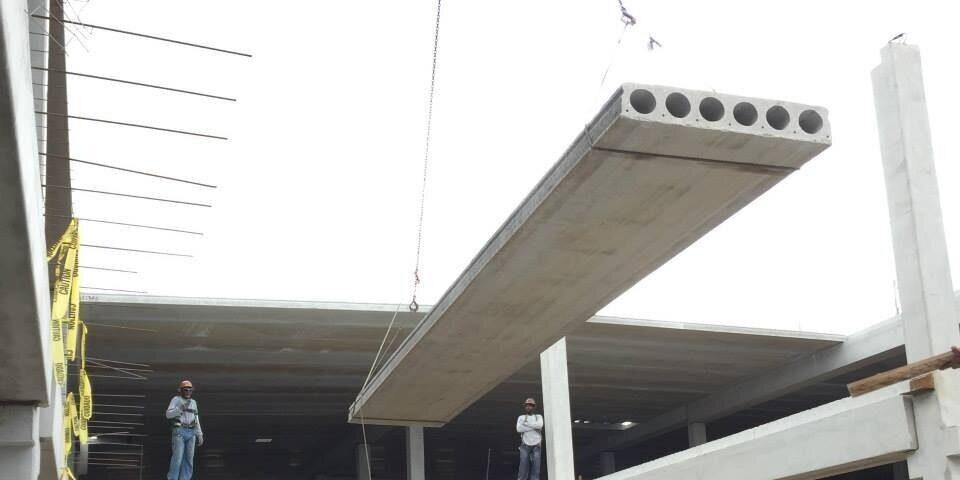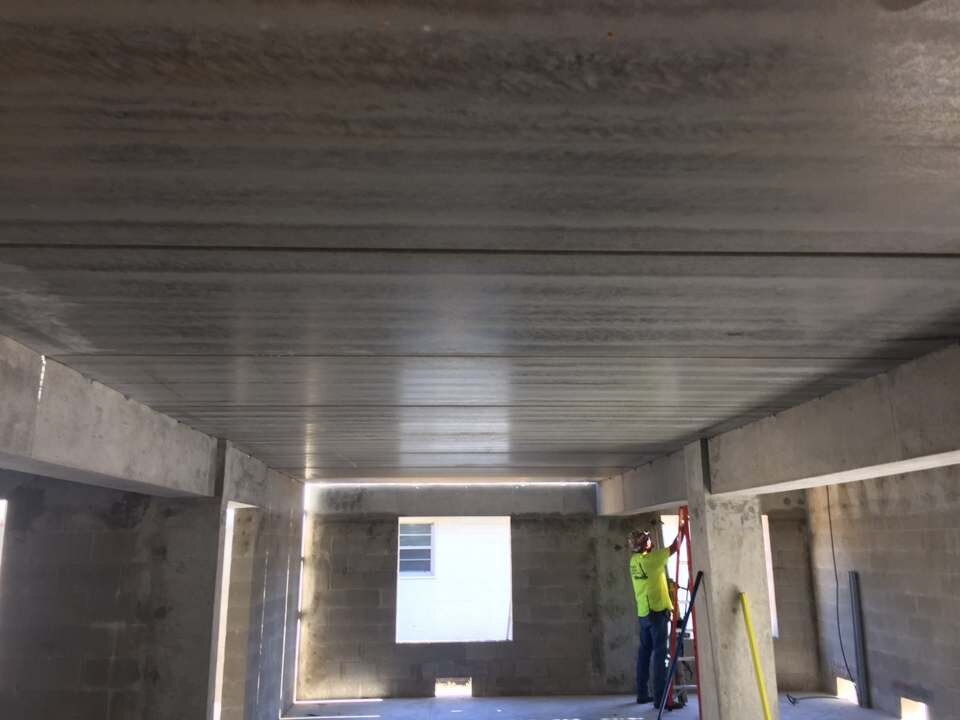Precast concrete hollow-core is a product often used in structures such as residential buildings and apartments. In these cases, owners may consider using hollow-core as a cost-effective way of creating floors and ceilings that cover a wide distance and can act as a conduit between rooms.
One area addressed by precasters and clients regarding hollow-core precast is the surface finish of the underside of the hollow-core plank. Precast producers are able to provide realistic expectations regarding the finished product. Communication between precasters and owners helps to create a plan that meets project outcomes. The following is a checklist of items for owners and producers to consider.
The components are durable, prestressed concrete, not drywall.
All ceilings require prep work prior to final painting. Hollow-core is no different. Knockdown, orange peel, smooth coat, and other textures that are commonly applied to drywall will work on hollow-core if necessary surface preparation is completed. Precast joints often remain visible in the finished product and can be integrated into the overall design of the space. Project budgets need to account for potential preparation that might be needed to achieve the desired appearance.
All painting requires preparation.
As is common for painted block (CMU) surfaces, the use of block-filler primer is also a good practice prior to painting hollow-core plank.
Consider material tolerances.
Collaboration between tradesmen is needed to achieve a desirable project outcome. Erecting hollow-core plank on CMU block walls requires that the top course is flat. The use of shims is an industry practice used to level plank. Precast concrete plank cannot mitigate the effects of poor craftsmanship. To achieve a level, flat ceiling, it’s important that attention is paid to the foundation that it will be sitting on.
Variations exist between manufacturers.
As with all regionally sourced materials, unique producer variations exist. Concrete beds used to be the standard, however, some manufacturers have now switched to steel beds for hollow-core production which results in a different surface appearance than the traditional concrete bed. The same is true of casting machines or extruders that make hollow-core using different mechanical processes to place the concrete, resulting in surfaces with different variations of smoothness.
Aesthetic options vary by region.
The option selections will vary depending on geographic location. The raw materials used in the manufacturing of hollow-core plank are locally sourced and play a role in the aesthetic finish of the product. Local producers are knowledgeable about what materials can be easily sourced and can offer suggestions. Aggregate options provide options for aesthetic variations.
The standards can vary slightly between producers.
Like other building materials, precast is manufactured using strict local, national, and international codes. Guideline differences with precast allows for some variation in production while maintaining regulation compliance. Some variations include mix design, aggregate types, cross-sections, and strand choices. It’s important to understand how these differences could affect the end product of the hollow-core.
Local practices can also vary between regions.
Each region of the country has its own local practices. Typical Northeast practices may not work in the Southwest and vice versa. It’s important to keep this in mind as you locate a producer. Online reference guides offer ideas that may be available in one area but not in another area. Meeting with a local producer is the best way to learn about available options for hollow-core production in your region.
Hollow-core plank has its own unique appearance.
Hollow-core plank is created differently than other structural precast components. The “beauty” of machine extruded/slip-formed hollow-core is that it is mass-produced and is budget-friendly. Comparison between hollow-core plank and other complex precast building components that are designed and manufactured piece by piece is not advised.
Prior to beginning, visit a precast plant.
No website or online reference guide can take the place of an in-person visit to a precast manufacturing plant to witness firsthand the beauty and durability of precast concrete building components. A visit will enable you to share your vision with a highly skilled precast team that can offer suggestions and provide information as well as show samples.
Using these steps as a guide with your design team will ensure the selection of a hollow-core ceiling option that works for your project. Below are some examples of previous hollow-core projects from FPCA producers to show you how they can be used in your next project.















